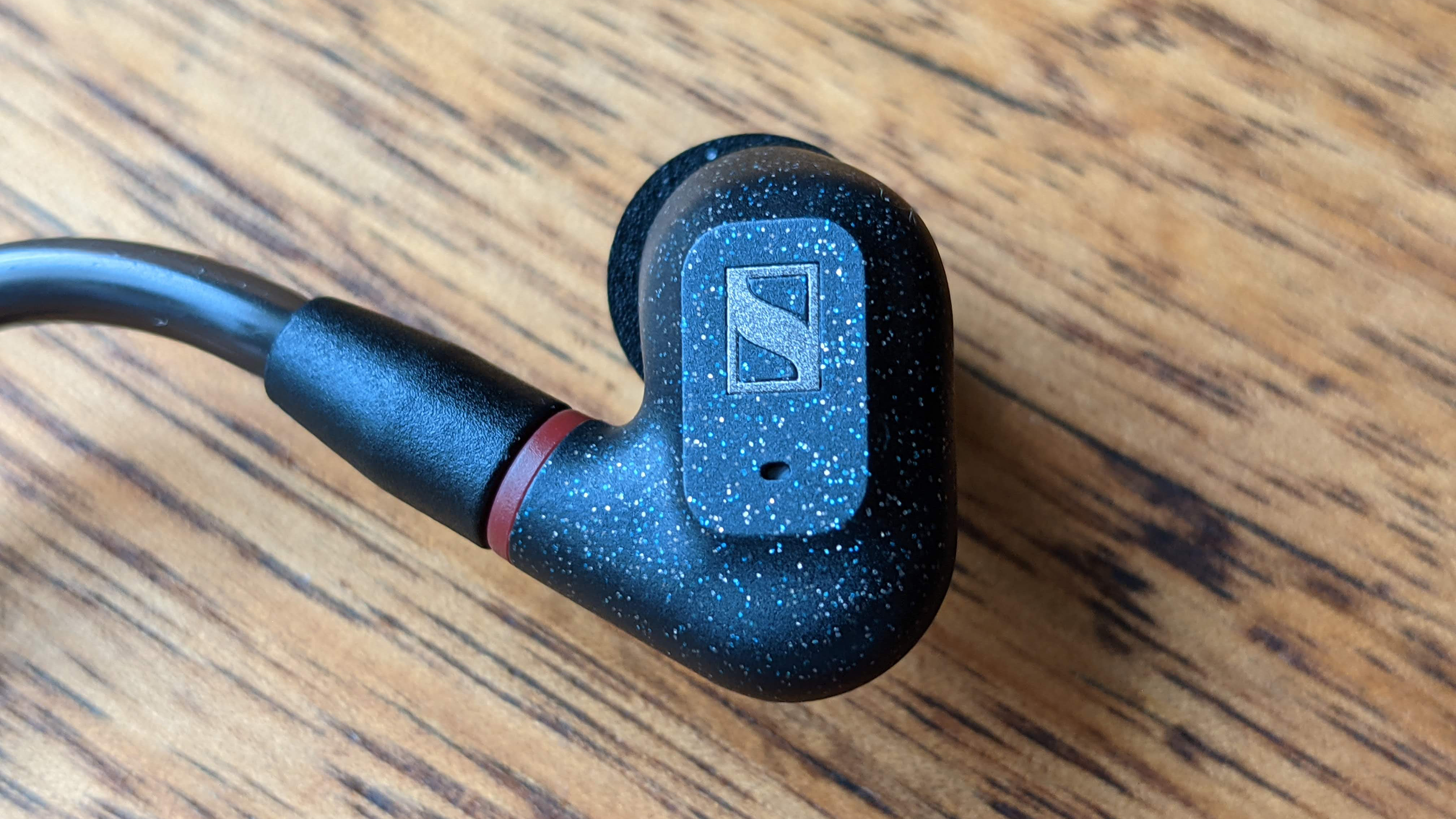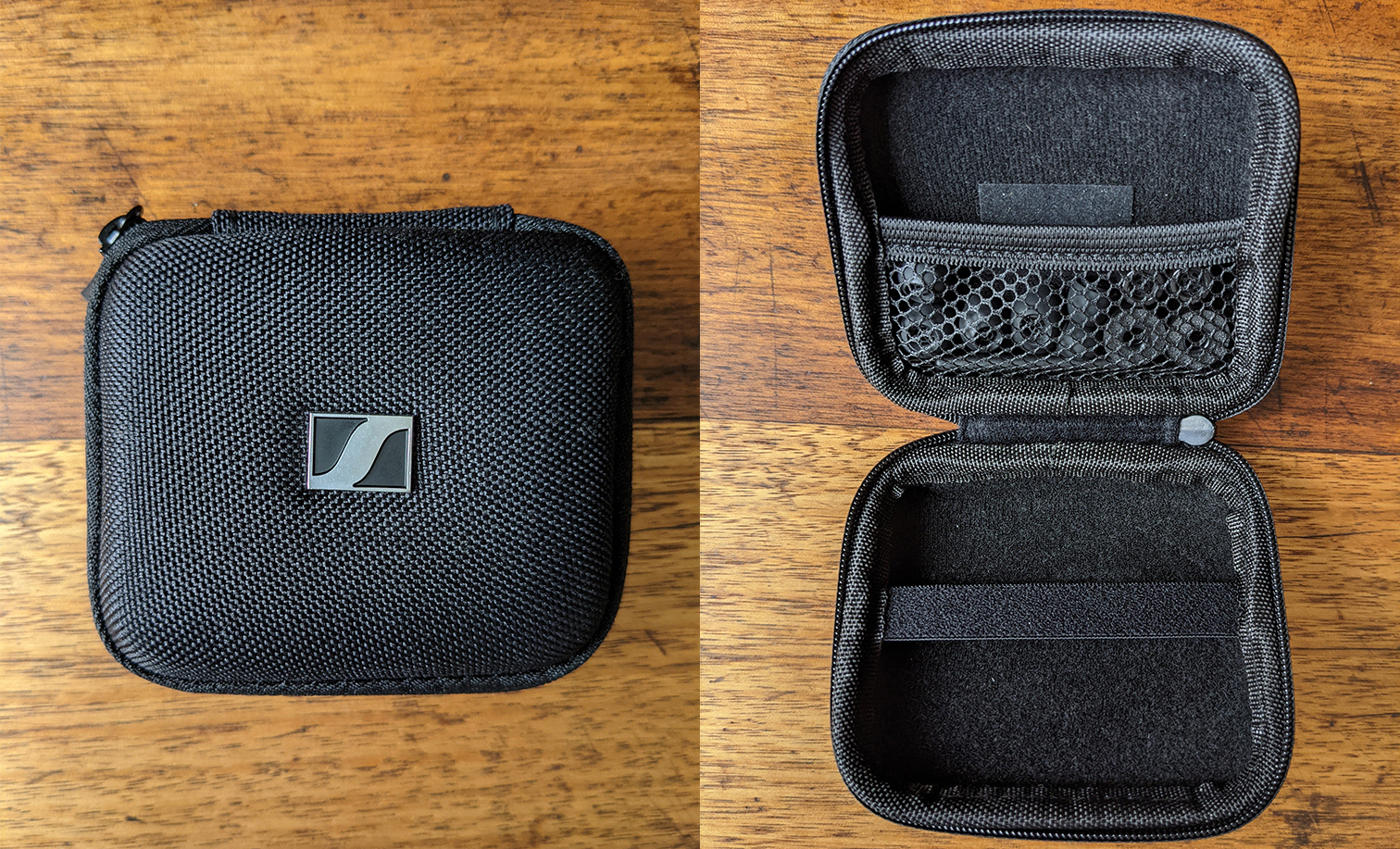TechRadar Verdict
For those that are looking to dip into the world of hi-fi and don't mind missing out on the feature sets of modern wireless buds, the IE 300 offers a gorgeous audio experience for a (relatively) low price of entry.
Pros
- +
Balanced, spacious and clear audio
- +
Solid and precise construction
- +
Affordable for in-ear monitors
Cons
- -
Cheaper wireless competition
- -
Cable noise fairly prominent
- -
No in-line remote or mic
Why you can trust TechRadar
One-minute review
While you won’t be getting the same set of features as a similarly priced set of true wireless, noise-cancelling headphones, that’s not the focus of the Sennheiser IE 300. Instead, this pair of cabled in-ear monitors (IEMs) offers a terrific entry into the hi-fi world at a reasonable price for the category.
Construction is excellent, with gold-plated connectors and a kevlar-esque material coating the cables. The same attention to detail is present in the design of the audio components, with some clever engineering allowing for much more of a sense of space than in-ears are often afforded.
The sound signature is pleasantly balanced, with a slight preference towards bass, but the IE 300 comfortably handles all genres and offers stunning levels of detail while doing so.
Some prominent cable noise means that these aren’t necessarily the best headphones for the more active among us, but this issue only really presents itself with more nuanced or quiet audio.
There’s no doubt that the IE 300 won’t be for everyone – some sensational competition in the consumer realm from the likes of Sony and Bose makes this kind of product a little harder to justify – but if fidelity is your focus, these Sennheiser buds won’t disappoint.
Price and availability
There’s no doubt these in-ears are on the higher end of the price spectrum, weighing in at $299 / £259 / AU$479. This puts them above some of the more premium true wireless in-ears, like the feature-rich Sony WF-1000XM3 as well as the more recent Bose QuietComfort Earbuds.
At this price point, it’s clear Sennheiser isn’t trying to directly compete with the more affordable wireless alternatives, nor the industry-level professional in-ear monitoring solutions used by performing musicians and other artists.
Sign up for breaking news, reviews, opinion, top tech deals, and more.
Rather, the IE 300 is an attempt to bridge the gap and offer audiophile grade sound quality in a focused and relatively affordable package (when considering other IEMs) to tempt you away from the likes of Sony’s true wireless buds.
- The best earbuds: our top earphones and in-ear headphones for any budget
Design
The IE 300 being a cabled set of headphones allows for incredibly compact driver housings that sit flush with the ear when worn – a far cry from the battery-toting true wireless in-ears that are dominating the market.

They’re only available in a single color configuration, which could broadly be described as ‘black’ – a statement to their focused, high-end design. The units themselves are a dark grey-black with metallic flecks, which on close inspection are gold and blue speckles, but this is only really noticeable at extreme proximity.
The cabling is a dark grey and has a slightly grippy texture (more on this later), and has been reinforced with para-aramid (the type of material that the brand Kevlar uses) for increased durability and “thousands of bend cycles”.
The cable terminates in a right-angle 3.5mm TRS jack which we found played nicely with our devices and was very easy to handle. There’s no in-built microphone or in-line volume or transport controls, which some cabled in-ear users will need to adapt to.
These detachable buds attach to the included cable via gold-plated Fidelity+ MMCX connectors, which allow for a 360-degree swivel of each of the buds as well as the ability to swap out the included cabling to your preferred choice of MMCX compatible cable.
This styling coupled with their diminutive size makes for an incredibly tidy aesthetic, and would border on being unnoticeable if it weren’t for the shiny Sennheiser logo at the center of each bud.

In the box, you’ll find three sets of silicon tips as well as three sets of memory foam tips, along with a cleaning implement to keep your buds free from wax buildup. Also included is a rather swish soft shell case that will help keep your buds safe and tangle-free when not in use, complete with some cable and accessory organization straps within.
In use
Fitting the IE 300 over and around your ears is incredibly easy, thanks to the swivelling connection that the buds have to the cabling along with the malleable ear hooks. We even found these hooks thin enough to coexist rather politely with the arms of eyeglasses, for those that wear them.

This reviewer found that none of the included silicon tips provided an adequate seal, no matter what size configuration was used or how they were adjusted in the ear, but thankfully the memory foam options worked a charm. With in-ear headphones it’s entirely necessary to get a snug fit, or else you’ll lose your audio’s bass frequencies entirely, and the IE 300 are no exception.
The issue with the silicon tips may be a result of a slight warping of their shape, which was the state we found them in out of the box, but this is likely to be an experience that varies user to user, as is often the case with in-ear fit.
The Sennheiser IE 300 is unfortunately quite susceptible to microphonics – a fancy phrase that refers to the noise heard when the wearer moves the cable or brushes it against clothing or something similar. We suspect this is largely to do with the aforementioned grippy cabling, although it’s hard to be certain.
This issue is most noticeable while no audio is being played through the earbuds or while the wearer is moving, so while it may be problematic for those listening to more nuanced music or podcasts while walking, listeners sitting still at home should be fine.
For those music lovers coming from a world where active noise-cancellation and true wireless connectivity are standard, it’s worth reiterating here that the IE 300 offers almost nothing in the way of these kinds of features. Instead, it focuses almost exclusively on audio quality.
Audio performance
Once a successful seal was made, the IE 300 offered a truly rich and spacious musical experience. One notable feature of these particular in-ear buds is their ability to create an excellent sense of space in their reproduction of music – a characteristic that’s very rarely found within the category.
Quite often, the inherently limited design of in-ear devices means that the listener ends up with somewhat compressed audio (albeit with some clever tricks to mask this, in some cases) due in part to the smaller drivers.
The IE 300 uses 7mm Extra Wide Band (XWB) transducers in combination with extra air chambers to provide clarity in the audio reproduction, and offer that aforementioned sense of space. The precision engineering pays off.

Listening to Fountains from Jogging House’s 2019 release Lure, the gentle fading in and out of each nuanced timbre appeared more distinct than ever before, but never to the point of feeling apart from the arpeggio bed and other textures that make up the ambient composition.
The straight bass punctuated the track and provided clear foundations, but gelled seamlessly with the overall mix. The same could be said for the organic tape hiss and other natural artefacts of the recording process, displayed here in clear detail thanks to the IE 300’s remarkable sense of space.
From the same album, Coral showed off moments of breathy and birdlike reverse synth chirping that felt otherwise backgrounded on other audio equipment. The space offered by these in-ears delivers tremendous clarity of individual elements without ripping them out of the mix.
At the other end of the musical spectrum, Gojira’s Remembrance from their sophomore record, The Link has all the attack and percussive precision required for groove metal when heard through the IE 300. The track’s stop-start nature is handled with care by the in-ears, and the riffs are as crushing as ever with their low-mid clarity and weight.
Overall, we’d say that the frequency distribution errs towards the bass end of the spectrum, though the warmer profile is subtle and the balance never felt overbearing. It’s worth noting that the foam tips emphasize these frequencies a little more than the silicon alternatives (from the fleeting moments we managed a seal with them) and also offer more passive noise cancellation (isolation).
Buy them if...
You want audiophile quality without the extreme pricetag
While the price may seem a little high if you’re comparing it to the wireless consumer market, it’s actually relatively low in the world of IEMs. If you’re looking to explore the world of hi-fi but aren’t quite ready to drop thousands on headphone and amplifier combos, the IE 300 offers a great middle ground.
You’d like a more compact and comfortable cabled experience
When packed away in its neat soft shell case, these buds are incredibly portable, and when worn (granted you can achieve a seal) are comfortable and lightweight enough for rather extended sessions.
You favor solid construction and precision engineering
Sennheiser’s construction on the IE 300 is top-shelf. From the kevlar-esque cabling to the gold-plated Fidelity+ MMCX connectors, it’s clear this is a quality product. Similarly, the design and engineering that’s gone into the driver and chamber tech here really shows when listening to your favorite tracks.
Don't buy them if...
You plan on using them for exercise
Considering the existence of cables and the fact that they produce some noise when moved, there are certainly better options for workouts. True wireless options are so ubiquitous these days that they make for a much more compelling option for your fitness needs.
You want noise-cancelling or other smart features
As mentioned, the IE 300 offers nothing outside of a way to get audio into your ears. This means that there isn’t even an integrated microphone for use with smartphones, so you’ll want to be purely chasing musical fidelity if you go for these.
- The best wireless earbuds: today's top neckband and true wireless ranked

